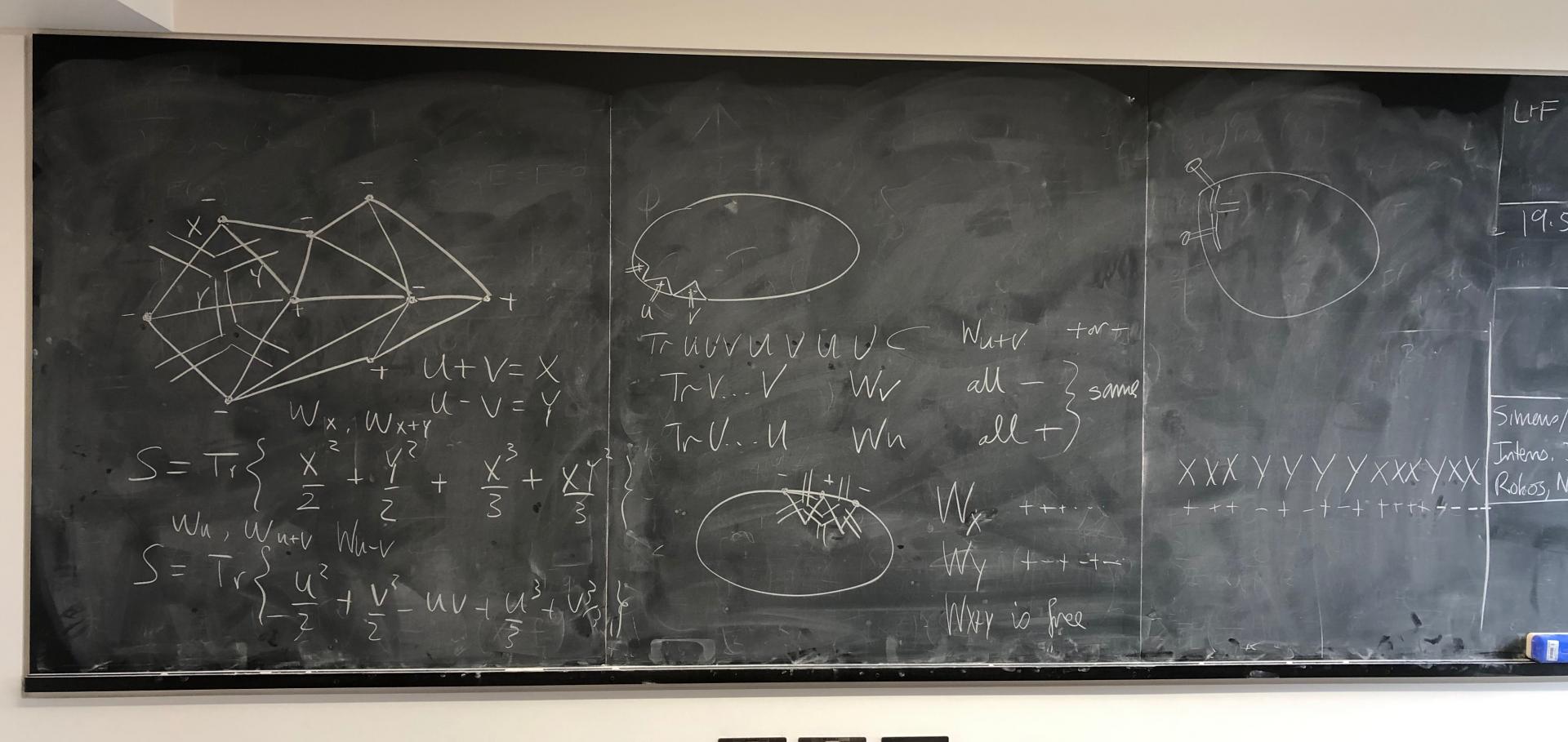Properties of the Z(3) Interface in (2+1)-D SU(3) Gauge Theory
(1995)
The Critical Exponents of Crystalline Random Surfaces
ArXiv hep-lat/9503008 (1995)
Abstract:
We report on a high statistics numerical study of the crystalline random surface model with extrinsic curvature on lattices of up to $64^2$ points. The critical exponents at the crumpling transition are determined by a number of methods all of which are shown to agree within estimated errors. The correlation length exponent is found to be $\nu=0.71(5)$ from the tangent-tangent correlation function whereas we find $\nu=0.73(6)$ by assuming finite size scaling of the specific heat peak and hyperscaling. These results imply a specific heat exponent $\alpha=0.58(10)$; this is a good fit to the specific heat on a $64^2$ lattice with a $\chi^2$ per degree of freedom of 1.7 although the best direct fit to the specific heat data yields a much lower value of $\alpha$. Our measurements of the normal-normal correlation functions suggest that the model in the crumpled phase is described by an effective field theory which deviates from a free field theory only by super-renormalizable interactions.The phase diagram of an Ising model on a polymerized random surface
ArXiv hep-th/9411013 (1994)
Abstract:
We construct a random surface model with a string susceptibility exponent one quarter by taking an Ising model on a random surface and introducing an additional degree of freedom which amounts to allowing certain outgrowths on the surfaces. Fine tuning the Ising temperature and the weight factor for outgrowths we find a triple point where the susceptibility exponent is one quarter. At this point magnetized and nonmagnetized gravity phases meet a branched polymer phase.The phase diagram of an Ising model on a polymerized random surface
(1994)


